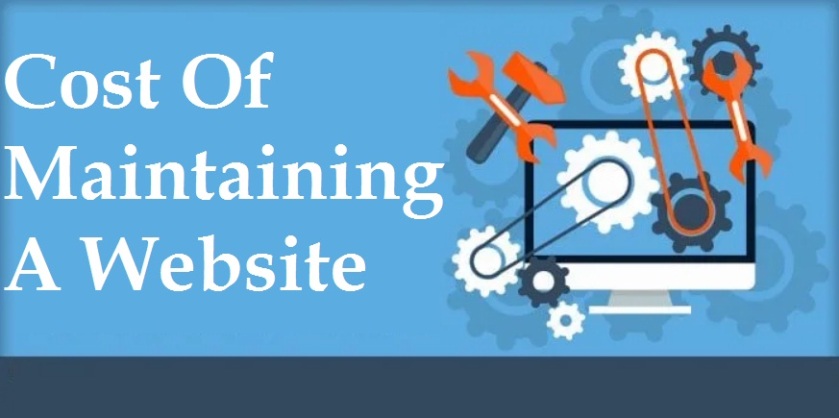Your website is the face of your business in the digital world. It’s where potential customers go to learn about your products or services, make purchases, and interact with your brand. However, like any other valuable asset, it requires regular maintenance to keep it running smoothly and efficiently. But have you ever wondered what goes into maintaining a website? From security updates to content management systems and server maintenance, there are numerous factors that affect website maintenance costs. In this blog post, we’ll explore how to calculate the true cost of maintaining a website and share tips on how to reduce those costs without sacrificing quality. So grab a cup of coffee and let’s get started!
The Importance of Regular Website Maintenance to Avoid Costly Issues
Regular website maintenance is essential for several reasons. One of the most significant reasons is to avoid costly issues that may arise from neglecting your website’s upkeep. For instance, if you don’t update your content management system (CMS), it becomes vulnerable to security breaches and hacking attempts, which can result in downtime or even loss of data.
Website maintenance also ensures that your site runs smoothly and efficiently, improving user experience and engagement. Regular updates ensure that plugins are working correctly, pages load quickly, forms function as expected, and links are not broken.
Moreover, regular website maintenance helps identify potential problems before they turn into bigger issues. For example, routine backups of your site’s data make it easy to restore lost content or functionality after an unexpected crash or attack.
Regular website maintenance keeps pace with technological advancements and changes in search engine algorithms. By keeping up with these trends through proper SEO practices like keyword research optimization techniques; you’ll enhance visibility on SERPs while maximizing ROI by driving traffic organically rather than relying solely on paid advertising campaigns.
What Factors Affect Website Maintenance Cost and How to Manage Them
Several factors can affect the cost of maintaining a website. Firstly, the complexity of the website plays a significant role in determining maintenance costs. More complex websites require more effort to maintain and hence, higher maintenance costs. Secondly, the frequency of updates also affects maintenance costs as regular updates are necessary to ensure smooth functioning and security.
Another factor is hosting fees which vary depending on the type of hosting chosen – shared or dedicated. Shared hosting tends to be cheaper but has limited resources while dedicated hosting provides greater control and flexibility at a higher price point.
Additionally, plugins or third-party integrations can add up to website maintenance costs if they need regular updating or become obsolete over time. It’s essential to keep an eye on outdated plugins that may slow down your site’s performance and increase vulnerabilities.
To manage these factors effectively, it’s crucial for businesses to have a clear understanding of their website requirements before embarking on development. Regular audits can help identify what needs updating and when- reducing future unexpected expenses from mounting issues.
Effective management strategies such as using reliable providers with transparent pricing plans combined with regular site audits will go a long way in keeping website maintenance cost-effective without sacrificing quality services.
How to Reduce Website Maintenance Cost Without Sacrificing Quality
When it comes to website maintenance, business owners often face the challenge of balancing cost with quality. However, reducing website maintenance costs doesn’t necessarily mean sacrificing quality. Here’s how you can do it:
1) Automate Routine Tasks: Consider automating tasks such as updates, backups and security scans to reduce the time spent on manual maintenance.
2) Choose a Reliable Web Host: Going for a cheap web host may seem like a good idea at first but could result in frequent downtime or slow loading speeds that affect user experience, resulting in potential loss of customers.
3) Optimize Website Content: Optimizing content such as images and videos can significantly reduce page load times and improve site speed without spending additional resources.
4) Prioritize Maintenance Needs: Focus on addressing high-priority issues that impact user experience rather than wasting time fixing minor issues that have little effect on performance.
By implementing these strategies, businesses can significantly reduce website maintenance costs while still maintaining high-quality standards for their websites
Why Regular Website Maintenance is Key to Staying Competitive in Today’s Market
Regular website maintenance is not only crucial for avoiding costly issues and reducing expenses, but it’s also key to staying competitive in today’s market. A well-maintained website helps to build trust with your audience, increase traffic and conversion rates, and improve your search engine rankings.
In addition, the digital landscape is constantly evolving with new technologies and trends emerging all the time. By regularly maintaining your site, you can ensure that it remains up-to-date with these changes and continues to meet the needs of your customers.
Ultimately, investing in regular website maintenance may seem like an added expense at first glance. Still, its long-term benefits far outweigh any short-term costs. By taking a proactive approach to managing your site’s health and functionality, you’ll be able to stay ahead of the competition while providing an exceptional online experience for your users.

